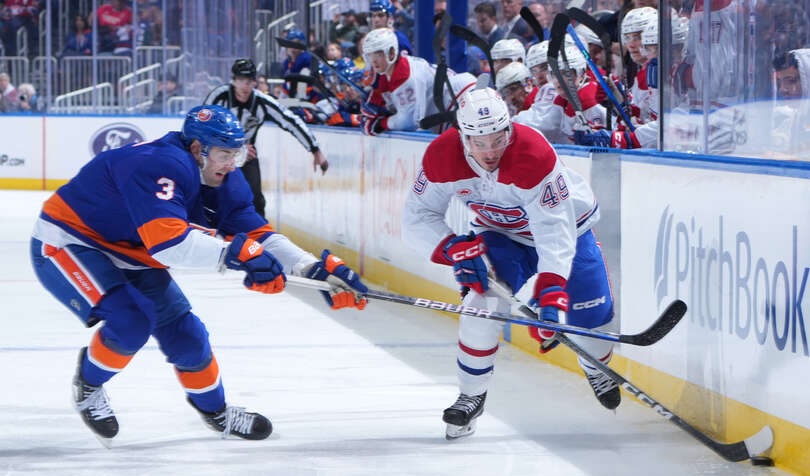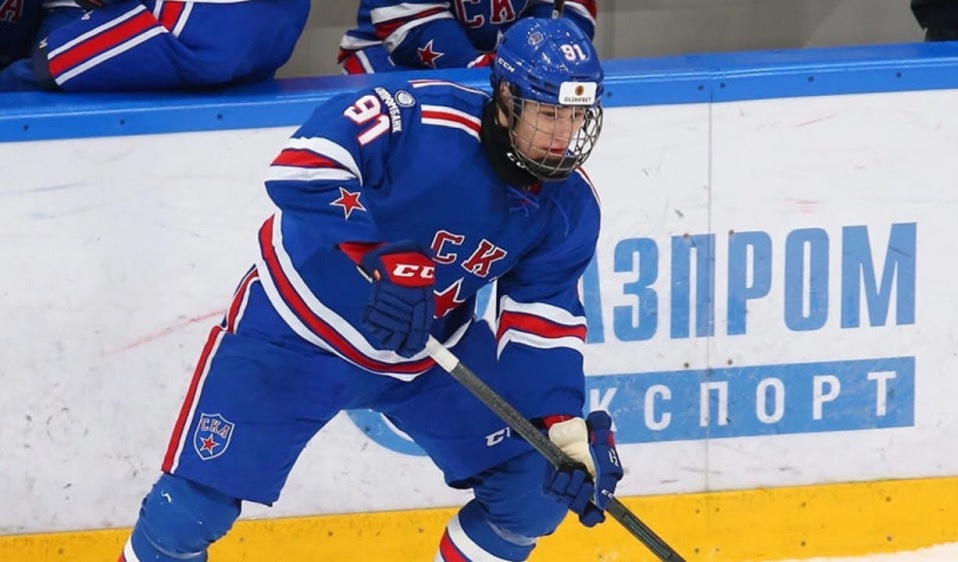HabsWorld.net --
First, I’d like to begin by saying that I am not getting paid to write about a bunch of overpaid people, thus, I am underpaid like many other hard working non-sports people. (Not that it really matters anyway…)
Let’s start with a quick trivia question: Has the average salary gotten higher, lower, or stayed the same? If you said lower, wake up! Yes, for yet another season, the league’s average salary has risen, although at its lowest rate in the past 10 years. Last season, much to the chagrin of one Michael Nylander, the average salary was $1.79 million dollars. This year, it has gone up to $1.81 million dollars, a ‘piddly’ increase compared to that of a year ago, where the average rose by roughly $200,000.
Now, let’s compare this season’s payrolls to those of last year. Here’s a question to think about while you’re scanning the chart: How many teams actually have a lower payroll this season? Answer below the chart. Note: All figures are in terms of millions of dollars, all figures are in American currency. Team payrolls do not reflects player signing bonuses or deferred payments. Team payrolls are accurate as of transactions made before October 18th, 2003.
| Team | 02/03 Payroll | 03/04 Payroll | Change (%) |
| 1) Detroit | $68.0 | $77.8 | +14.4% |
| 2) New York R. | $69.2 | $77.0 | +11.1% |
| 3) Dallas | $61.7 | $67.6 | +9.6% |
| 4) Philadelphia | $56.0 | $65.1 | +16.3% |
| 5) Toronto | $54.3 | $61.8 | +13.8% |
| 6) St. Louis | $63.1 | $61.2 | -3.0% |
| 7) Colorado | $60.1 | $60.9 | +1.3% |
| 8) Anaheim | $39.0 | $54.4 | +39.5% |
| 9) Washington | $50.7 | $51.1 | +0.8% |
| 10) New Jersey | $52.4 | $48.1 | -8.2% |
| 11) Los Angeles | $43.3 | $46.1 | +6.5% |
| 12) Boston | $37.3 | $45.8 | +22.8% |
| 13) New York I | $41.7 | $43.8 | +5.0% |
| 14) Montreal | $48.6 | $42.7 | -12.1% |
| 15) Ottawa | $30.3 | $39.6 | +30.7% |
| 16) Vancouver | $31.8 | $38.7 | +21.7% |
| 17) Carolina | $39.2 | $37.8 | -3.6% |
| 18) Phoenix | $44.3 | $37.8 | -14.7% |
| 19) Calgary | $33.3 | $35.2 | +5.7% |
| 20) San Jose | $47.8 | $34.8 | -27.2% |
| 21) Tampa Bay | $28.9 | $33.5 | +16.0% |
| 22) Buffalo | $33.1 | $33.0 | +6.1% |
| 23) Columbus | $28.2 | $32.1 | +13.8% |
| 24) Chicago | $44.5 | $31.6 | -29.0% |
| 25) Edmonton | $30.9 | $30.8 | +0.3% |
| 26) Atlanta | $26.0 | $27.2 | +4.6% |
| 27) Pittsburgh | $31.2 | $26.6 | -14.7% |
| 28) Florida | $32.7 | $26.4 | -19.3% |
| 29) Minnesota | $20.5 | $24.9 | +21.4% |
| 30) Nashville | $25.2 | $23.2 | -7.9% |
Now, to answer the above question, 11 teams actually lowered their payroll from last season, 3 of which were playoff teams. Thus, 19 teams raised their payroll, 13 of which were playoff teams.
A question that cannot be answered now but surely is something to think about, is will last season repeat itself in that the team with the lowest payroll makes it to the Conference Final while the team with the highest payroll misses the postseason? If this is to be the case, Detroit will miss the playoffs despite adding Dominik Hasek, and Nashville becomes a contender overnight, despite losing 11 veterans out of last season’s lineup. Advice: don’t bet the farm on this stuff…
Another looming concern as the CBA expiration approaches is the amount of money owed to players under contract through the 2003-04 season. Currently, 249 players are under contract, and are owed just over 582 million dollars combined. Considering the fact that the owners want a salary cap of approximately $31 million per team, this spells trouble for teams with a lot of guaranteed money for next season.
Below are the top and bottom 5 in terms of money owed through next season: Note: Figures are in millions of U.S. dollars.
| Team | Players under contract | Money owed |
| 1) Dallas | 11 | $47.0 |
| 2) Philadelphia | 13 | $40.5 |
| 3) Anaheim | 14 | $36.4 |
| 4) Montreal | 14 | $30.6 |
| 5) New Jersey | 11 | $29.0 |
| T25) FLA/ATL | 6 | $7.9 |
| 27) Nashville | 6 | $7.8 |
| 28) Minnesota | 5 | $7.2 |
| 29) Boston | 4 | $6.8 |
| 30) Chicago | 7 | $5.0 |
This table means that 3 teams would already be over the cap if the Players’ Union were to agree to a hard cap of $31 million dollars, not to mention that there still would be restricted free agents to ink to a new deal. It also shows that teams like Montreal and New Jersey (also the Rangers, Stars, Avs, Caps and Leafs amongst others) would also likely have problems unless they can convince some top-end talent to take 500% pay cuts. (The chances of this happening are the same as the Union agreeing to a $31 mil hard cap, it’s just not going to happen.)
Here’s an oddball stat that you can’t find anywhere else: the average salary of a player per second spent on the ice (with a few restrictions of course):
The highest paid players in the league (Jaromir Jagr (WAS) and Peter Forsberg (COL) $11 mil each) make roughly $149.05 per second per shift, amounting to roughly $5,500 per shift. The lowest paid player in the league (Dave Lowry (CAL) $250,000) makes roughly $3.39 per second per shift. This means that in 2 seconds, the lowest paid player in the NHL makes almost as much as the Canadian minimum wage per HOUR. Yet the Players’ Union thinks that salaries aren’t high enough… Restrictions: Players play all 82 games, get paid for just games, play 20 shifts per game, shifts lasting 45 seconds.
From the working-man’s perspective, analyzing salaries in professional hockey can be a drag, you get to see how little you make in contrast to a player who only works for 7-8 months, and puts in less effort (not to knock the players for the work they put in). At least, this is the case for now, if the owner’s get their wish for a hard cap, it may not look so drastic a few years down the road. One can only hope…
Stats courtesy of The Hockey News, the National Hockey League Players’ Association (NHLPA), and the Elias Sports Bureau, official statistician of the National Hockey League.

